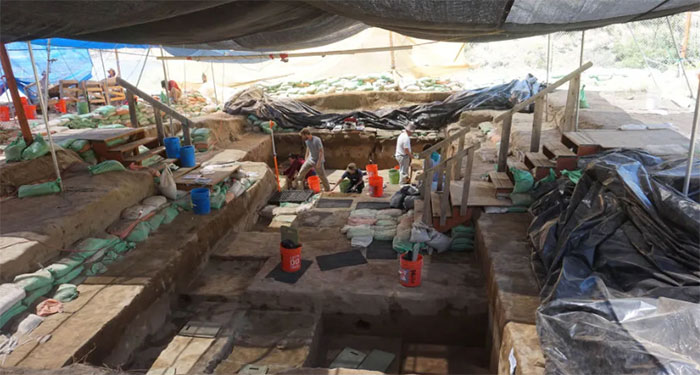The 16,560 year old artifact reveals the earliest human presence in the Americas
The research paper of the team said that the dating of radioactive carbon is done on the buffer of artifacts, such as stone tools and bone fragments, from the new archaeological site showing the antiques. aged 16,560 to 15,280 years ago.
According to the researchers, the occupants of the land along the Salmon River used spears, darts and other weapons with firing points to hunt and gather in small groups.

Archeologists have just found evidence of the appearance of humans in the Americas.
Moreover, Davis said that the evidence gathered at the rock-release sites has been recovered like the artifacts found in northern Japan today.
'We hypothesize that this could signal a cultural link between the first people living in the northern Pacific and the traditional technology ideas that spread from Northeast Asia to North America. end of the last ice age , ' explains Loren Davis.
The team's research has officially pushed back the widely accepted belief that human life in the Americas began after the formation of the bridge on the Baringa mainland , currently submerged in the Bering Strait and separating Siberia. out of Alaska.
Although these early human migration patterns are still unknown, Davis suspects that they arrived along the Pacific coast by boat and headed for the Columbia basin.
However, there are also some critics. For example, researcher Ben Potter of the University of Alaska is skeptical about the age of antiques. He said he did not strongly believe the connection drawn by the Loren Davis group between their findings and Japanese artifacts.
- Ancient Chinese discovered America before Columbus?
- How did prehistoric humans come to America?
- Human embryonic stem cell research reveals the earliest phase of human development mystery
- The nation welcomes the earliest and latest year 2017 in the world
- The 15,600-year-old footprint confirms human history in the Americas
- Discover the earliest ancestors of humankind
- Astonishing discovery of human traces in North America 24,000 years ago
- Discover the earliest ancestors of humankind
- Discovered 4,500 year old artifact in the rock
- The lovers hold each other's hands tightly for 5,000 years in the tomb
- China: discovered 5,000-year-old writing
- Pliers in the Americas have a reproductive ability
- The first case of Down syndrome in human history
- Breeding Nopal cactus
 Discovered an ancient centipede fossil 99 million years old
Discovered an ancient centipede fossil 99 million years old Discovered bat-like dinosaurs in China
Discovered bat-like dinosaurs in China Discovered a 200-year-old bronze cannon of the coast
Discovered a 200-year-old bronze cannon of the coast Discover 305 million-year-old spider fossils
Discover 305 million-year-old spider fossils